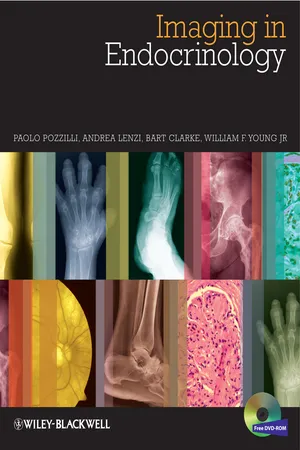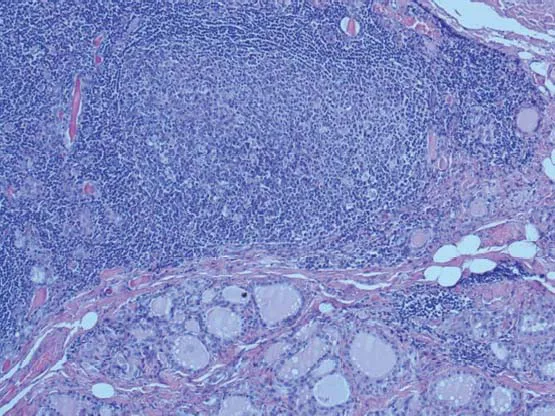
Imaging in Endocrinology
- English
- ePUB (mobile friendly)
- Available on iOS & Android
Imaging in Endocrinology
About this book
Imaging in Endocrinology will provide endocrinologists and radiologists of all levels with an outstanding diagnostic imaging atlas to aid them in the diagnosis and management of all the major endocrine diseases they are likely to encounter.
In full colour throughout, the 300 high-quality images consist of CT scans, MRI, NMR and histopathology slides, and are arranged by each specific endocrine condition, resulting in a visually outstanding and easily accessible tool that guides the user through exactly what to look out for and provides a practical and extremely useful aid in helping them formulate a diagnosis.
Every major endocrine condition is covered in a specific section, including diseases of the thyroid, pituitary, reproductive and adrenal glands, the pancreas, bone metabolism problems, and the various forms of endocrine cancers. Each disease covered will offer a comparison of the normal findings so as to further assist in diagnosis. An accompanying website contains an online slide-atlas of all the figures in the book, to allow users to download all figures for use in presentations.
Led by Paolo Pozzilli, an internationally-recognised expert in this field, the authors have assembled a wonderful collection of images that will be greatly valued by endocrinologists and radiologists alike, ensuring this is the perfect tool to consult when assessing patients with endocrine disease.
Frequently asked questions
- Essential is ideal for learners and professionals who enjoy exploring a wide range of subjects. Access the Essential Library with 800,000+ trusted titles and best-sellers across business, personal growth, and the humanities. Includes unlimited reading time and Standard Read Aloud voice.
- Complete: Perfect for advanced learners and researchers needing full, unrestricted access. Unlock 1.4M+ books across hundreds of subjects, including academic and specialized titles. The Complete Plan also includes advanced features like Premium Read Aloud and Research Assistant.
Please note we cannot support devices running on iOS 13 and Android 7 or earlier. Learn more about using the app.
Information
- Antithyroid peroxidase antibodies (TPOAbs) and thyroglobulin antibodies (TgAbs)
- TSH, free thyroxine (FT4)
- Total cholesterol, high density lipoprotein (HDL), and triglycerides
- Neck ultrasound (Fig. 1.3)
- Computed tomography (CT) scan (rare)
- 99mTcO4 thyroid scintigraphy (Fig. 1.4)




Table of contents
- Cover Page
- Title Page
- Copyright Page
- About the Companion Website
- Preface
- Collaborators
- Chapter 1: Thyroid
- Chapter 2: Pituitary Gland
- Chapter 3: Adrenal Gland
- Chapter 4: Pancreas
- Chapter 5: Bone and Mineral Metabolism
- Chapter 6: Gonads
- Chapter 7: Mucocutaneous Manifestations of Endocrine Disorders
- Index